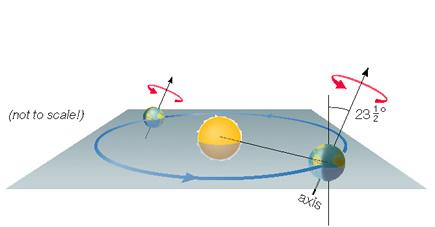
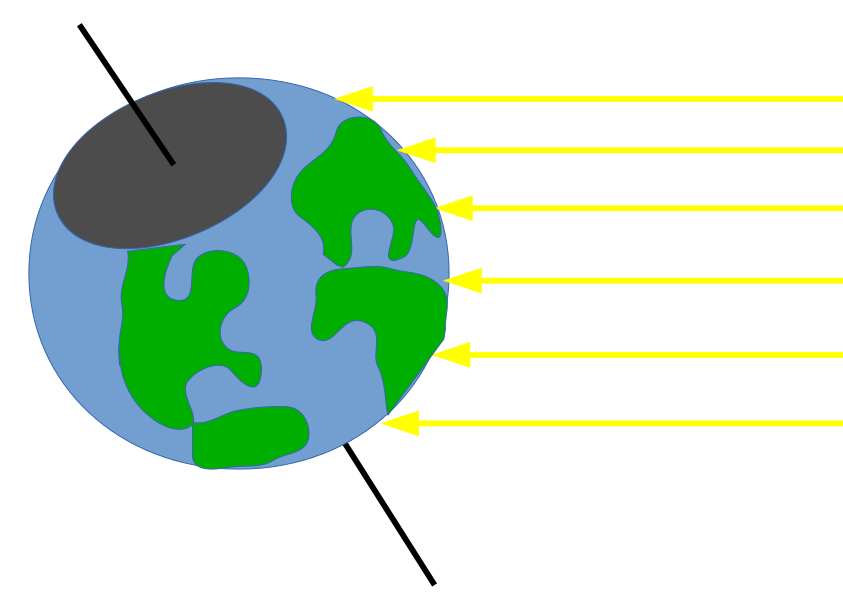
[4]
The Earth rotates once per day about an axis which is offset 23.5 degrees from the solar plane. As a result of this axial tilt our planet experiences both equinoxes (days with equal amounts of daylight and darkness) and solstices (days with the maximum number of daylight hours). In the Southern hemisphere the solstice usually occurs around the 21st of December. When the solar angle is near a solstice in the South, the Northern hemisphere experiences fewer hours of daylight with increasing northern latitude. Looking at the image below we can see that for regions north of the Arctic Circle the Sun can be completely shadowed by the curvature of the Earth.


Since the shaded polar region receives little to no sunlight during the winter months the air in this region becomes frigidly cold. As cold air is more dense than warmer air it will tend to sink towards the surface and create a high pressure zone. This cold, descending air will diverge (spread out) near the surface and move south.
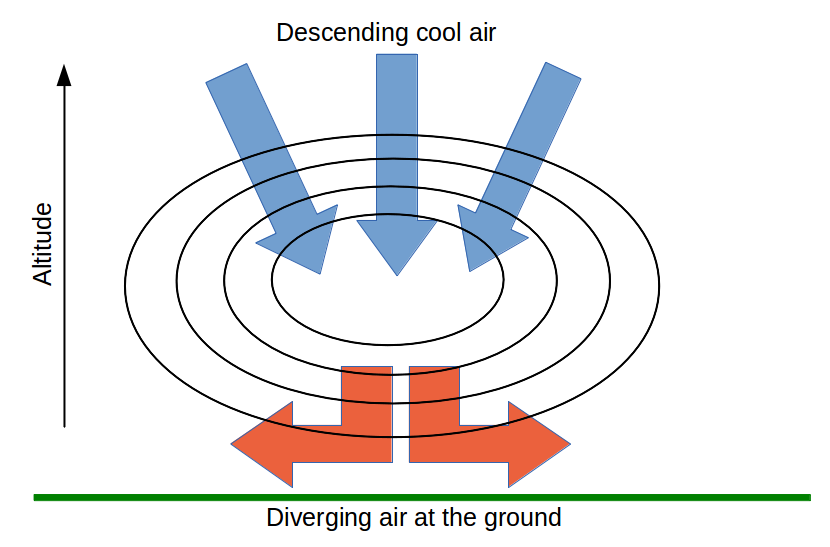
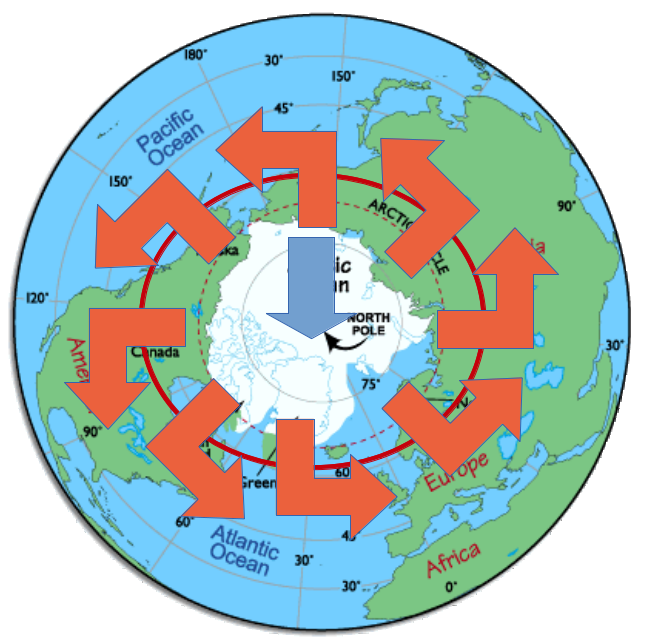
[5]
The southward flowing cold air is acted on by the Coriolis
force
and is diverted to the east creating a strong ring of wind around the
polar
region. The Corriolis force is not a 'true force' but is simply an
expression of Newton's Second Law in a rotating reference frame. You
can demonstrate this same effect with a friend putting a piece of paper
against the wall and holding a marker to it. As your friend moves the
paper along the wall she should rotate it. You should see a
spiral or a circle being drawn on the paper.
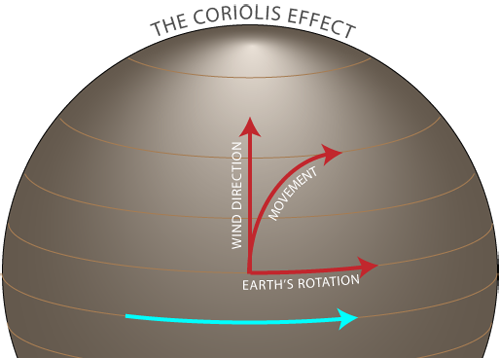
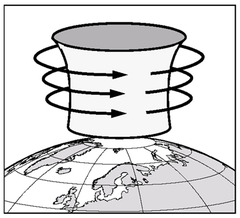
[3]
[2]
As a result of this spinning reference frame (Coriolis Effect) the eastward winds set up a cyclone or vortex around the pole. This vortex separates frigid polar air from the warmer air in the mid-latitudes and plays a large role in our winter-time weather.